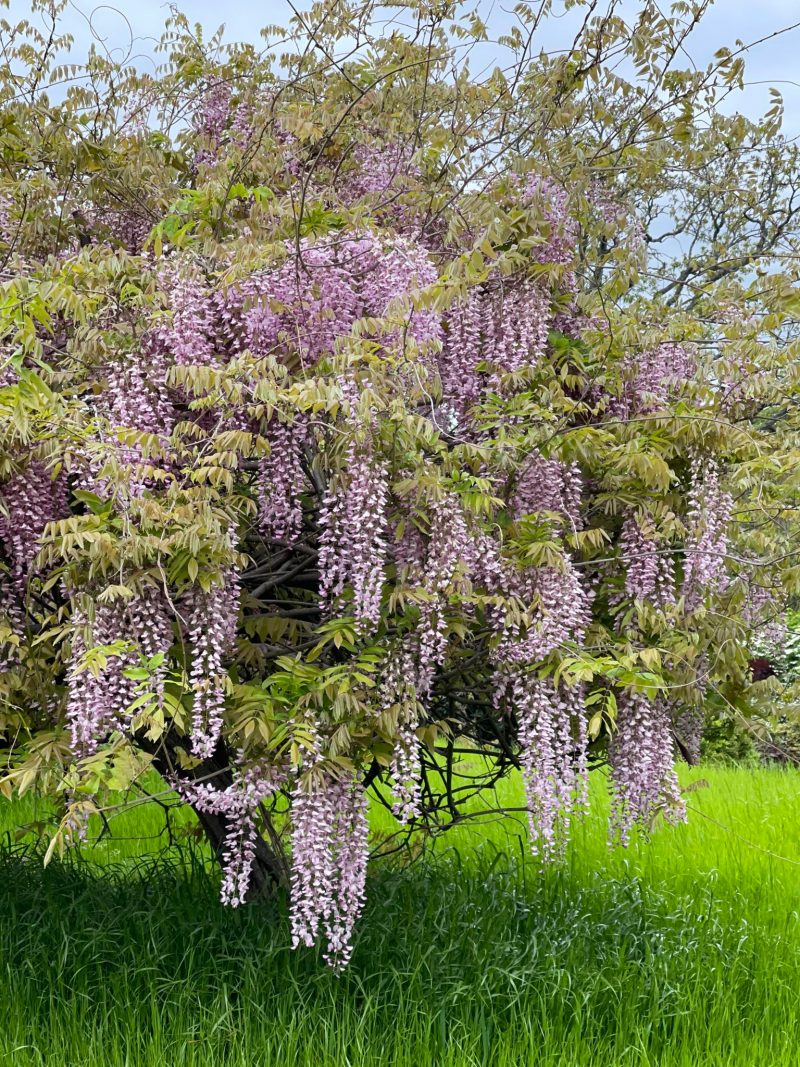As the blooms fade from my wisteria I was reminded yet again this season of just how much I love this plant. But, it’s a plant not without its challenges and strong opinions from gardeners. If you’ve ever grown wisteria you know they can be aggressive and challenging to manage. In fact, they can quite often get out of hand unless given regular attention. I’ve often referred to them as the ‘sumo wrestlers of the plant kingdom’. Who hasn’t seen the lovely purple Chinese wisteria gone wild spanning from tree to tree slathering the side of a hill in bloom? There are exceptions to these aggressors, such as the native species Wisteria frutescens. We grow the popular cultivar ‘Amethyst Falls’ at Moss Mountain. One of my favorite vining plants.

Many years ago I had the good fortune to be the recipient of some wisteria that had been trained as trees. These were given to me by an old nurseryman who had lovingly trained a single stem of a young plant into a tree form. These wisterias were the Japanese variety, called Wisteria floribunda. Many of you will recognize it as the one with the long elegant racemes, or flowers. The Chinese wisteria ( Wisteria chinensis) has shorter racemes, blooms slightly earlier in the spring and I think more fragrant.

At the time of planning and planting the gardens, I was given eight plants, which thrilled me. At that time they were quite old, yet well trained into ‘standard’ or single tree trunk forms. They were planted in two rows forming an alleé on the west lawn.

Interestingly, when we planted them I had assumed they were all the same color, but that first spring after planting I was surprised to find the blooms to be amethyst on all the plants with the exception of one, that bloomed white!

Now 15 years on, some of these ‘trees’ are showing their age and are requiring some extra attention.

The trunks of two of them have deteriorated due to sunscald at an early age. Had I protected the trunks this likely would not have happened, lesson learned).

One of the Amethyst trees toppled last year in a storm. Yet we had a single stem emerge from the roots as now a new leader of the old vine is now being trained as a tree. Sadly, the single rogue white one toppled in the same storm, but the old plant has held on, albeit in contorted and more horizontal form.
By way of an insurance plan, last year I took cuttings from them all to serve as future replacements. Happily many rooted and we are now fortunate to have the next generation to work with; as no doubt, others will need replacing in time. I’ve simply planted a single-rooted cutting in large nursery containers with a central stake on which to grow each plant. The ‘tree’ form from a vining plant requires identifying a single stem, attaching it to a strong stake, and pruning it to grow upward to the desired height for branching to begin.

This process will, of course, take time. But, I’ve found that projects such as this can be some of the most rewarding.
Watch my facebook live here where I walk you through Wisteria Alleé and show you a few other things growing at the farm!